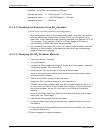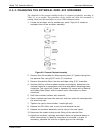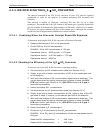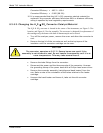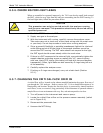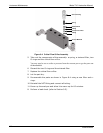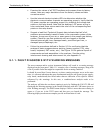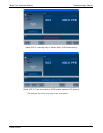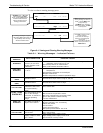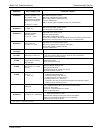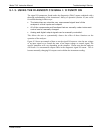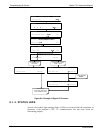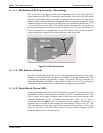
Troubleshooting & Service Model T101 Instruction Manual
212
Examine the values of all TEST functions and compare them to factory
values. Note any major deviations from the factory values and take
corrective action.
Use the internal electronic status LED’s to determine whether the
electronic communication channels are operating properly. Verify that the
DC power supplies are operating properly by checking the voltage test
points on the relay board. Note that the analyzer’s DC power wiring is
color-coded and these colors match the color of the corresponding test
points on the relay board.
Suspect a leak first! Technical Support data indicate that half of all
problems are eventually traced to leaks in the pneumatic system of the
analyzer, the source of zero air or span gases or the sample gas delivery
system. Check for gas flow problems such as clogged or blocked
internal/external gas lines, damaged seals, punctured gas lines, a
damaged pump diaphragm, etc.
Follow the procedures defined in Section 9.5 for confirming that the
analyzer’s b
a
sic components are working (power supplies, CPU, relay
board, keyboard, PMT cooler, etc.). See Figure 3-8 for general layout of
components and sub-assemblies in the analyzer. See the wiring
interconnect drawing and interconnect list, see Appendix D.
9.1.1. FAULT DIAGNOSIS WITH WARNING MESSAGES
The most common and/or serious instrument failures will result in a warning message
displayed on the front panel. Table 11-1 contains a list of warning messages, along with
a list of possible faults that might be responsible for the warning condition.
It should be noted that if more than two or three warning messages occur at the same
time, it is often an indication that some fundamental analyzer sub-system (power supply,
relay board, motherboard) has failed rather than an indication of the specific failures
referenced by the warnings. In this case, a combined-error analysis needs to be
performed.
The analyzer will alert the user that a warning is active by flashing the FAULT LED and
displaying the Warning message in the Param field along with the CLR button (press to
clear Warning message). The MSG button displays if there is more than one warning in
queue or if you are in the TEST menu and have not yet cleared the message. The
following display/touchscreen examples provide an illustration of each:
07266B DCN6485



